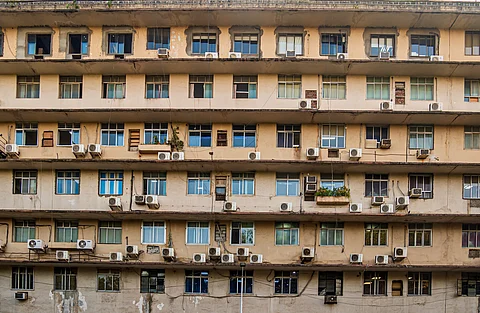

In 2015, India committed to the Paris Agreement, pledging to limit global warming to 2 degrees Celsius above pre-industrial levels, with an ideal target of 1.5°C for a sustainable future. However, India’s mean surface temperature has already risen by 1°C since 1950, reaching 25.02°C in 2023. The rate of warming has accelerated since economic liberalisation in 1991, resulting in a 0.5°C increase over just 32 years.
In 2024, the India Meteorological Department (IMD) recorded 77 heatwave events, spanning a cumulative 536 days across the country. This year, parts of Odisha experienced heatwaves as early as February and March, with temperatures soaring to 43.6°C on March 16 in the town of Boudh. February 2025 was the hottest on record, with an average temperature of 22.04°C — 1.34°C above normal.
This rising heat directly affects electricity demand, especially during summer. The Central Electricity Authority (CEA) expects peak electricity demand to rise by nearly 20 gigawatts (GW) within a year — from a peak of 250 GW in May 2024 to nearly 270 GW this year.
Rising temperatures have significantly altered how people cope with summer heat. Ceiling fans remain the primary method of cooling for over 90 per cent of urban Indian households and over 80 per cent rural ones, accounting for a quarter of household electricity consumption. However, as fans offer limited relief, people are increasingly turning to air coolers and air conditioners (AC).
According to National Family Health Survey (NFHS)-5 data, 24 per cent of Indian households own an AC or an air cooler. While 40 per cent of urban households own one, only 15 per cent of rural households do. Despite this, rural households (200 million) outnumber urban households (88 million) more than two to one, making AC ownership more evenly spread than it appears.
Still, AC penetration in India remains relatively low. By comparison, close to 90 per cent of households in the US and 60 per cent in China have air conditioning.
Demand for room ACs has surged, with industry estimates indicating that 9.4 million units were sold in 2024 — a 35 per cent year-on-year increase. In India, domestic electricity consumption constitutes one-quarter of total national consumption. The growing uptake of ACs is driving this number up. AC usage alone accounts for approximately 6.6 per cent of the country’s total electricity demand, shows the data from CEA’s monthly generation report. Given India’s low per capita electricity consumption, household electricity use is expected to grow significantly.
According to my calculations, if 70 per cent of households adopt air conditioning, it could account for 18 per cent of India’s total electricity demand based on 2024-25 projections—highlighting the scale of the country’s present and future cooling needs.
There is also a large disparity in AC ownership between states. While Punjab has a 70 per cent household AC penetration rate, states like West Bengal and Bihar remain at just around 5 per cent. Ironically, some of the hottest states — Odisha, Jharkhand, Gujarat, West Bengal, Bihar and Uttar Pradesh — have some of the lowest AC penetration rates, pointing to immense growth potential.
Moreover, these figures do not reflect the number of AC units per household. As families grow larger, their cooling needs increase, often resulting in multiple ACs per home—further amplifying electricity demand. As a result, the burden on India’s electricity grid will rise sharply, especially since different regions reach peak electricity consumption at varying times due to geographic and climatic differences.
India’s growing need for cooling presents a climate paradox. The increasing use of air conditioning to cope with extreme heat is largely powered by coal-based electricity — exacerbating greenhouse gas emissions and climate change and creating a vicious cycle of rising temperatures and growing cooling demand.
Electricity demand has risen sharply over the past three summers, largely met by coal-fired thermal power, which remains India’s dominant energy source. During the summer, over 75 per cent of electricity is generated from coal, show the monthly generation figures from the Union Ministry of Power.
In fact, coal-based generation has seen an average annual growth of 5.5 per cent over the last two years, while renewable energy output (wind, solar, hydro) has declined both in absolute numbers and as a share of total generation — highlighting India’s growing summer-time dependence on coal.
Running a single AC for eight hours a day over four months adds roughly ten seconds of runtime to a coal-fired power plant, producing 2.78 kilogrammes of carbon dioxide (CO₂) per unit each summer. It takes a mature tree approximately 50 days to absorb this amount of carbon.
At current levels of AC use, India’s cooling-related emissions total 202,000 tonnes of CO₂ — equivalent to the carbon sequestration of 27 million mature trees, assuming one household’s summer consumption as 1,600 kiloWatt hour over the duration of four months.
India’s reliance on coal-powered electricity is unlikely to shift dramatically in the near future. Given the scale of cooling needs, air conditioners must be addressed as a critical part of the country’s energy transition. Manufacturers should be mandated to produce and sell energy-efficient ACs, reducing per-unit electricity consumption.
Energy-efficient ACs benefit both consumers and producers. While India’s highest-rated ACs may dominate the domestic market, they still lag behind Chinese and Japanese models in terms of energy efficiency, technology and global competitiveness. Raising public awareness about the environmental impact of air conditioning — such as keeping ACs at optimal room temperatures — can help reduce unnecessary consumption.
On a larger scale, India must pair efforts to reduce electricity use with the transition to cleaner energy sources. Decarbonising thermal power plants is essential through renovation and modernisation, adoption of alternate fuel co-firing and significantly higher integration of renewable energy into the grid.
Kushagra Goyal is a research intern with the Industrial Pollution Unit at the Centre for Science and Environment. He holds an LLM in Global Environment and Climate Change Law from the University of Edinburgh.
Views expressed are the author’s own and don’t necessarily reflect those of Down To Earth